Just because you’re an adult doesn’t mean your zits are gone for good. But where you land on the acne spectrum can determine how you blast those breakouts.
But what are the types of acne?
According to the American Academy of Dermatology Association (AADA), up to 50 million Americans deal with acne every year. The two main branches are non-inflammatory and inflammatory, which include:
- whiteheads (aka closed comedones)
- blackheads (aka open comedones)
- pustules
- nodules
- papules
- cysts
While acne comes in many forms, plugged up pores are usually to blame thanks to pesky things like:
- bacteria
- hormones
- ingrown hairs
- excess dead skin cells
- excess oil (sebum) production
Here’s everything you need to know about acne plus top-notch treatment tips for each kind.

Pictures of different types of acne
Here’s some pics to help you figure out your skin sitch.
What type of acne do I have? Acne types explained
The “good things come in small packages” thing def doesn’t apply to acne. Whether you’re dealing with a minor breakout or a full-on pimple palooza, acne is the pits.
Inflammatory acne is typically more intense than non-inflammatory acne, which is usually clogged comedones.
These are the acne types you might be dealing with:
Non-inflammatory acne (aka comedones)
Whiteheads (closed comedones)
These lil’ buggers are a mix of sebum (oil), debris, and dead skin cells that clog your pores. The bumps usually have a white center and a red or discolored border.
Blackheads (open comedones)
Fun fact! These zits don’t get their dark color from trapped dirt. Blackheads form when zit gunk is exposed to air. This creates those tiny black dots that can be a pain in the A to get rid of.
Comodone treatments
Lots of over-the-counter (OTC) treatments can treat and prevent whiteheads or blackheads. They come in creams, rinses, moisturizers, gels, or toners. Look for stuff that contains:
- benzoyl peroxide
- salicylic acid
- resorcinol
- sulfur
Some folks also dig microdermabrasion, chemical peels, or light therapy. Just be sure to talk with your dermatologist before you go with one of these treatments.
For more severe cases your derm might suggest an Rx treatment.
Inflammatory acne
Pustules
Pustules kinda look like next-level whiteheads. They also have a yellow-y or whitish center and a reddish or discolored base. But they’re usually bigger and tender.
Pustule treatment:
OTC products with benzoyl peroxide or salicylic acid can sometimes do the trick. You can also apply a warm compress to the area to help loosen the crud.
Nodules
Nodules happen when clogged pores get irritated or swollen. They occur deep within your skin so you might not be able to DIY them away.
Nodules treatment:
Your doc might prescribe an oral med like antibiotics to kill off bad bacteria. They could also give you a vitamin A derivative (isotretinoin) that can decrease oil gland size in the pores.
Papules
Papules are solid, tender, raised bumps. They don’t have a visible center but can make the surrounding skin reddish, pinkish, or discolored.
Papules treatment:
Papules can be triggered by irritants. So, avoid harsh facial scrubs or heavy-duty makeup. You should also ditch products that inflame your skin 🔥.
Acne mechanica
Acne mechanica is caused by pressure or friction on your skin. It can cause inflammatory skin conditions like pustules, papules, or nodules.
BTW, “maskne” can totes fall under this category 😷. Make sure your mask fits 10/10 to prevent friction.
Acne mechanica treatment:
Try avoiding clothing or items causing friction, or clean these items regularly and make sure they fit properly.
You can treat the areas like you would pustules, papules, or nodules — just depends on what you’re dealing with.
Cysts
These pus-filled lumps are a combo of sebum, dead skin cells, and bacteria. Cysts occur under your skin and can be uber painful. They also tend to be bigger than other forms of acne and can cause scarring.
Cyst treatment:
Treatment depends on the type of cyst you have. Your doc might recommend a med like isotretinoin or an antibiotic. In more severe cases they can drain or remove it.
Acne conglobata
Acne conglobata (AC) is a rare form of nodulocystic acne. It happens when acne cysts and nodules combine. So basically, *sing* you get the wooorst of both worlds. It usually happens on your face, chest, or back and can lead to scarring or disfigurement.
Acne conglobata treatment:
While AC can be severe, there are lots of treatments that can ease symptoms and reduce your risk of scarring. Your derm might prescribe an isotretinoin (like Sotret, Claravis, Accutane, or Amnesteem).
What’s the deal with bacne?
As if the spots on your face weren’t bad enough, acne can also attack your back (and other parts of your bod). Like facial acne, bacne comes in many forms (e.g. comedones, pustules, nodules, papules, or cysts).
Here are some tips to keep your bacne at bay:
- Shower after each sweat sesh. This can wash away excess oils and debris that can clog pores.
- Exfoliation station. A light exfoliant can slough off excess skin cells. You can opt for a scrub or a chemical exfoliant like salicylic acid.
- Let your back breathe. Wearing tight clothes on the reg can lead to bacne. Switch to breathable fabrics, especially when you work out.
- Meds. Your doc can prescribe an oral medication or topical cream to help you get your back on track.
How severe are the different types of pimples?
While all acne can be annoying AF, some types are more severe than others.
Here’s the lowdown:
- Mild acne. This includes noninflammatory acne like whiteheads or blackheads. It can usually be treated with an OTC product or lifestyle changes.
- Moderate acne. Peeps with moderate acne have inflammatory pimples like papules or pustules. You might be able to treat them with OTC meds, but sometimes Rx meds are needed.
- Severe acne. Cysts, nodules, and acne conglobata are the most severe types of acne. OTC remedies usually won’t help clear them up. You’ll need to see a skin specialist.
FYI: You usually need to go to a doc to treat severe types of acne. But in the meantime, you can use a cold compress to reduce swelling and discomfort.
Tips for treating different types of acne
Your acne prob won’t clear up overnight, but that’s OK! Some treatments can start to work in a few days, but others can take several months till you see a difference.
You might want to schedule an appointment with a dermatologist if OTC remedies or certain skin care regimes don’t work. They can recommend more effective treatments that can help you ditch your zits.
Your derm can also determine if your acne is actually acne. Other skin conditions that resemble acne include:
- milia
- rosacea
- folliculitis
- keratosis pilaris
- sebaceous filaments
- sebaceous hyperplasia
P.S. Don’t use a million products at once. This can dry out your skin and make your acne even worse.
Popping PSA
We know the temptation is real, but you should never ever play Dr. Pimple Popper IRL. Popping pimples can lead to:
- cysts
- pitting
- nodules
- scarring
- dark spots
Your acne treatment guide
We love a good visual. Here’s a chart to help you pick the best treatment path for your unique skin-tuation.
| Type of acne | OTC treatments | Prescription treatments |
| blackheads | salicylic acid, topical retinoids, benzoyl peroxide, or alpha-hydroxy acids and beta-hydroxy acids (AHAs and BHAs) | topical retinoids like tretinoin or adapalene |
| whiteheads | salicylic acid, topical retinoids, benzoyl peroxide, or AHAs and BHAs | azelaic acid or topical retinoids |
| papules | benzoyl peroxide or salicylic acid | hormonal birth control pills (for peeps who have a vagina) or antibiotics such as erythromycin or doxycycline |
| pustules | cortisone creams, salicylic acid, salicylic acid, azelaic acid, or benzoyl peroxide | antibiotic creams or pills, steroid creams, or prescription-strength salicylic or azelaic acid |
| nodules | cold pack to reduce swelling | hormonal birth control pills (for peeps who have a vagina), antibiotics, corticosteroids, dapsone, or isotretinoin |
| cysts | warm compress to help the cyst drain on its own (DO NOT pop it!) | antibiotics, isotretinoin, or a procedure to drain or remove the cyst. |
| acne mechanica | salicylic acid, topical retinoids, benzoyl peroxide, or AHAs and BHAs | prescription-strength AHAs and BHAs or topical antibiotics |
| acne conglobata | N/A | oral acne meds like Sotret, Claravis, Isotretinoin, or Amnesteem |
Bottom line
It’s totes normal if a facial volcano hits you hard in the feels. But keep in mind, acne is nothing 👏 to 👏 be 👏 ashamed 👏 of 👏.
Give your doc a call if acne is affecting your life. They can help you come up with a dope treatment plan.
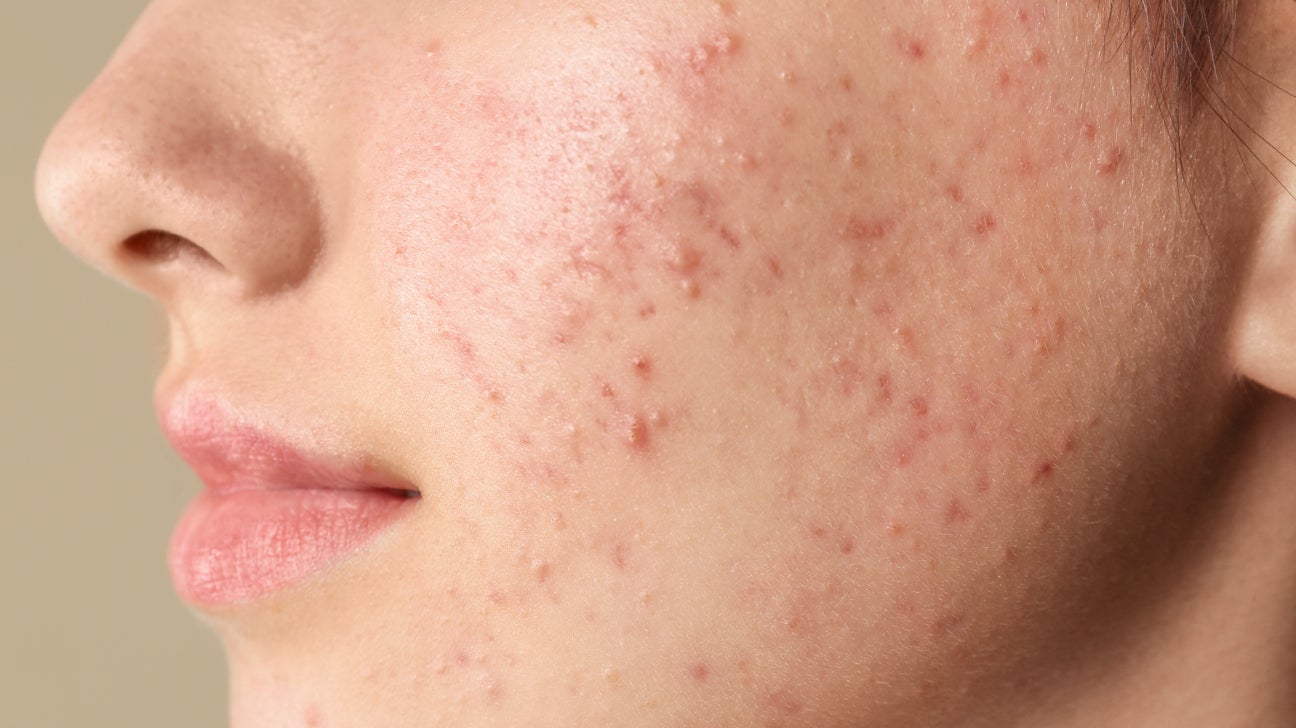
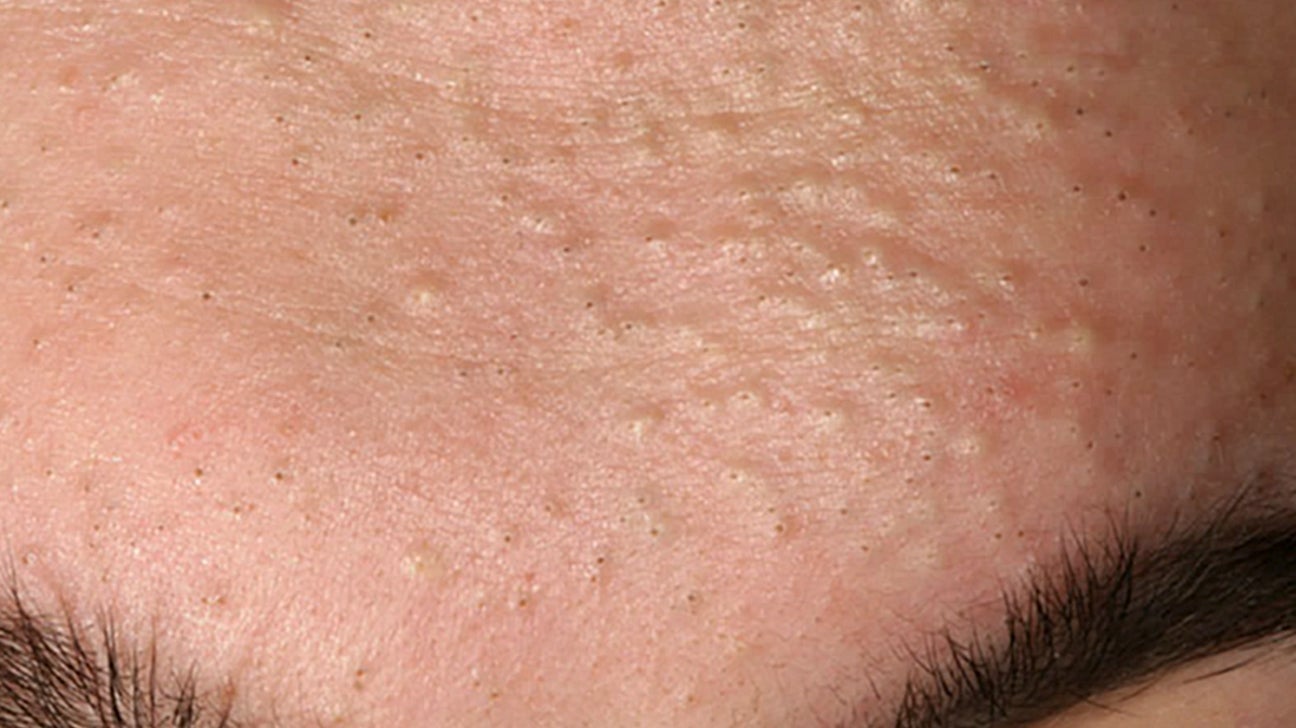

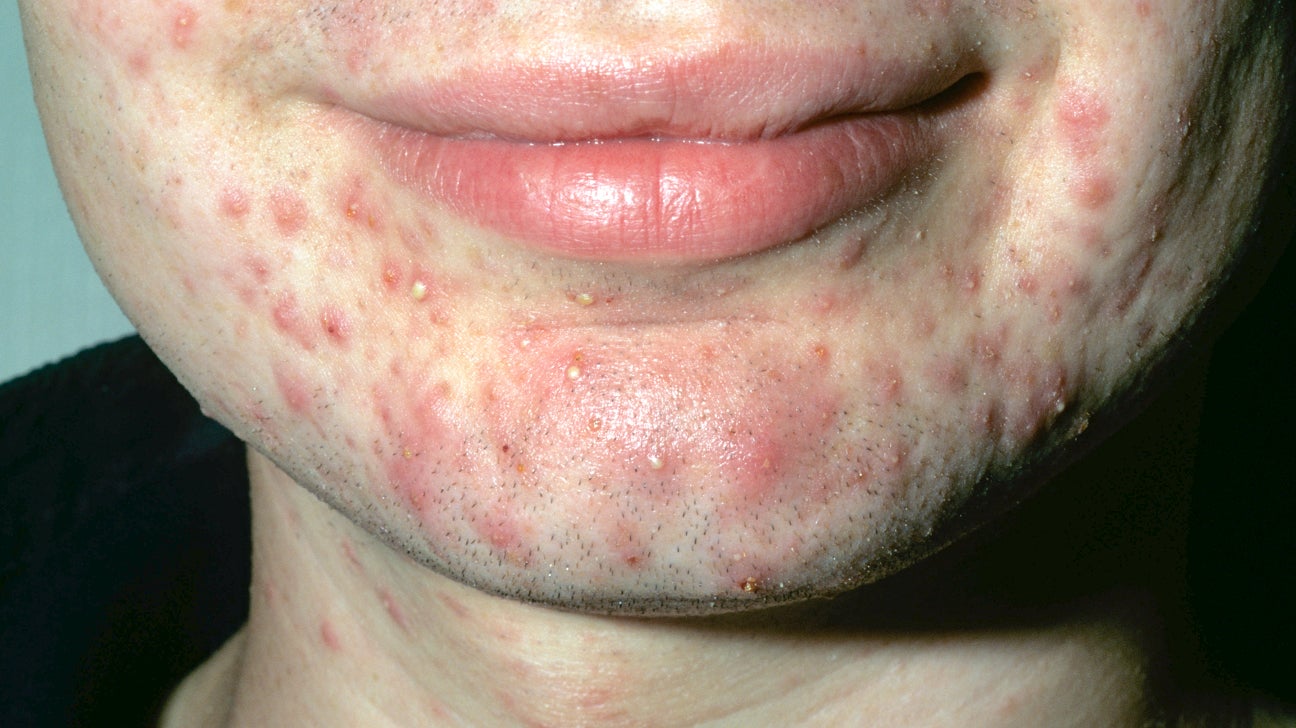
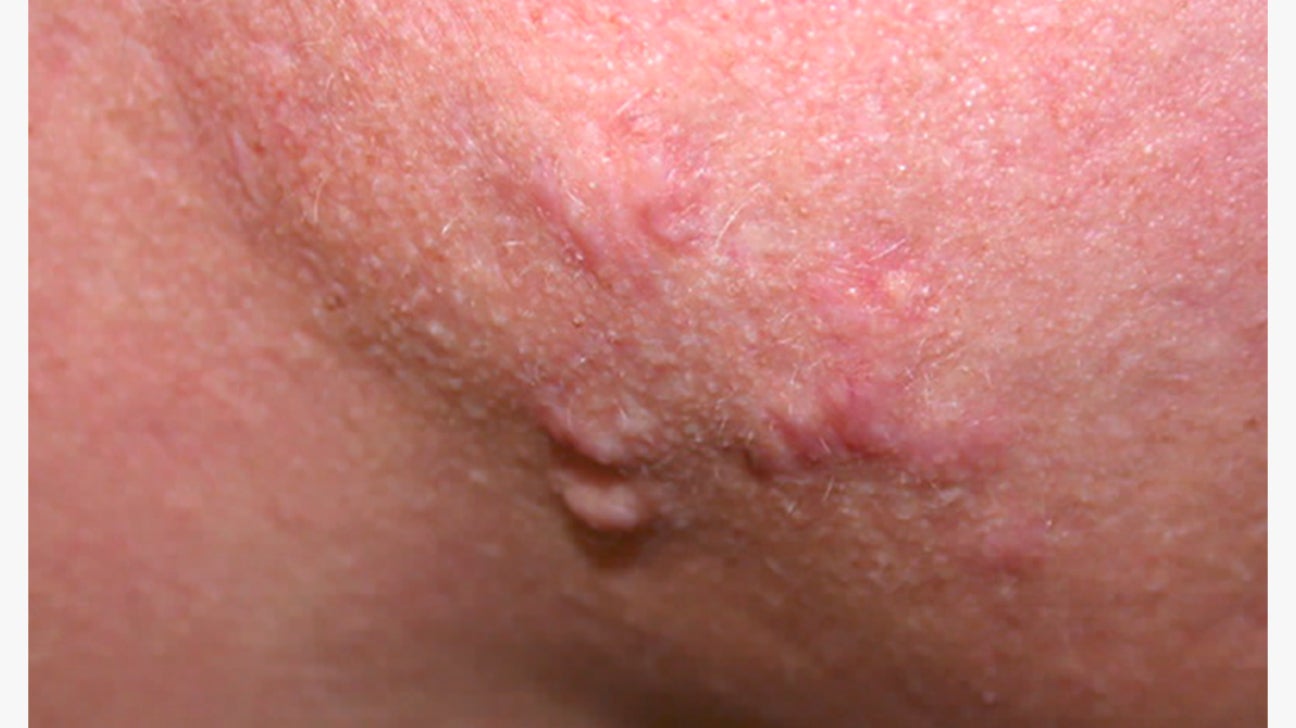
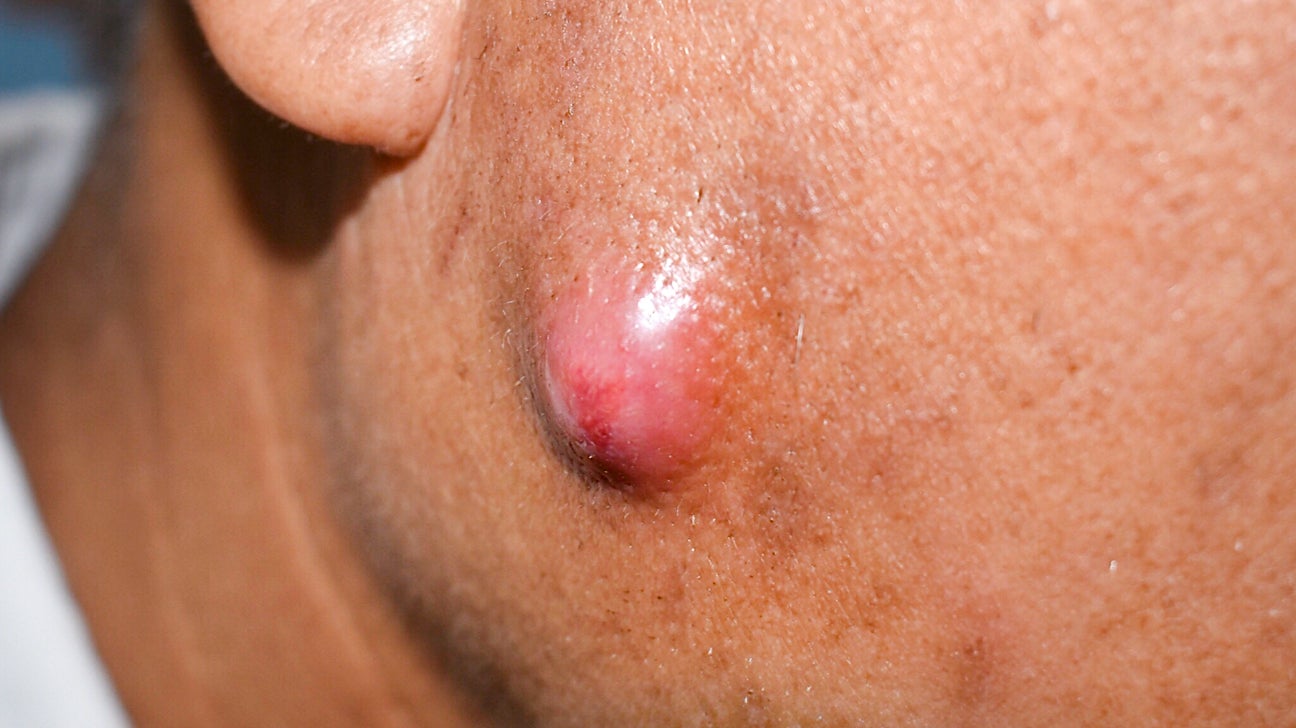
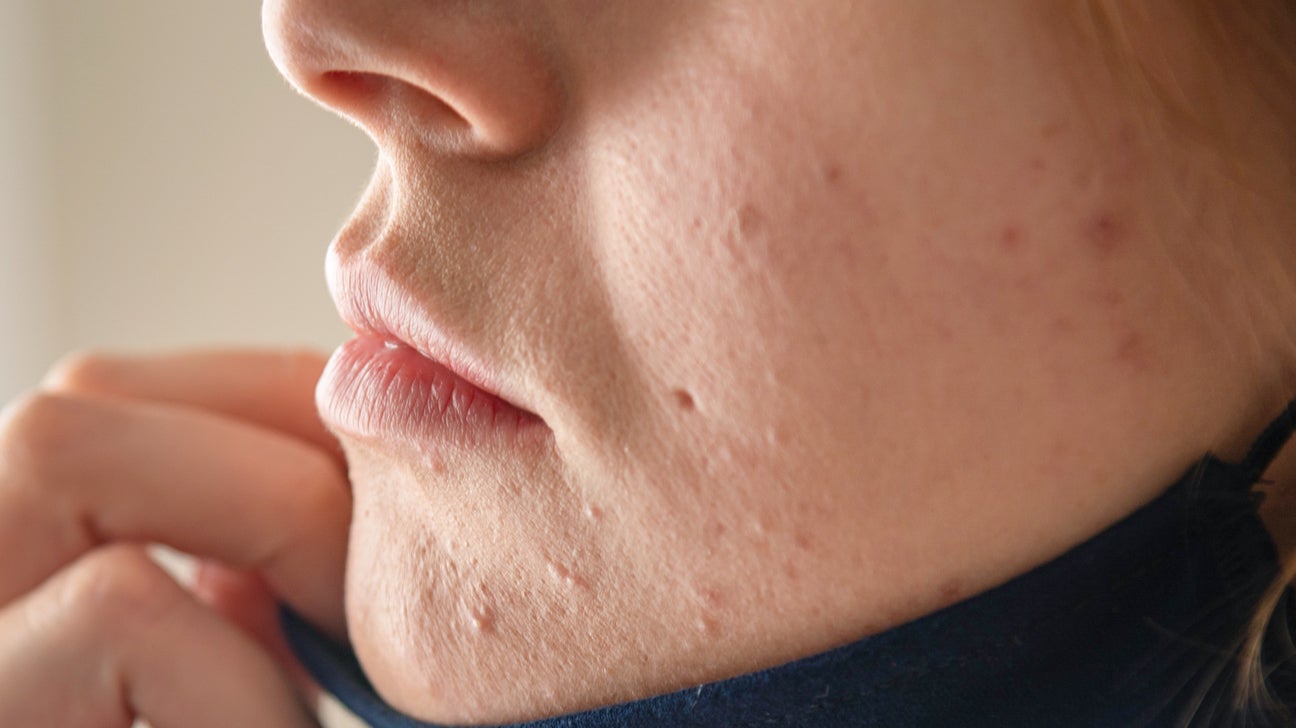
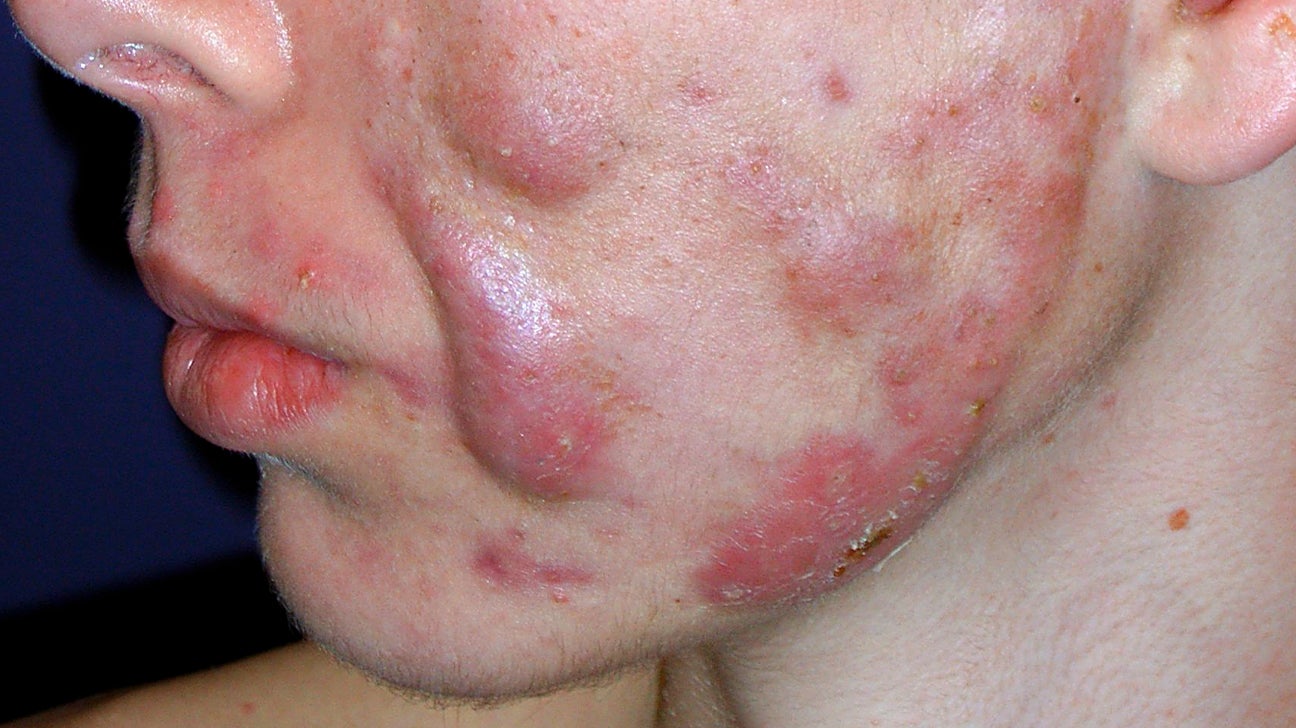

0 Commentaires